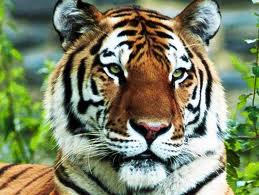National Flag of India

The National Flag of India is a horizontal tricolor of deep saffron (kesaria) at the top, white in the middle and dark green at the bottom in equal proportion. The ratio of width of the flag to its length is 2:3. In the center of the white band is a navy-blue wheel with 24 spokes which represents the Ashok Chakra.
The top saffron colour, indicates the bravery, strength and courage of the country. The white middle band indicates peace and truth with Dharma Chakra. The green shows the fertility, growth and auspiciousness of the land.
Its design is that of the wheel which appears on the abacus of the Sarnath Lion Capital of Ashoka. Its diameter approximates to the width of the white band and it has 24 spokes. The design of the National Flag was adopted by the Constituent Assembly of India on 22 July 1947.
National Anthem of India
The National Anthem of India, originally composed in Bengali by Nobel Laureate by Rabindranath Tagore, was adopted in Hindi version as National Anthem on 24 January 1950 and first sung on 27 December 1911 in Calcutta .
Complete composition contains five stanza, the first paragraph has been adopted as the National Anthem. Official playing time is 52 seconds and there are codes of conduct associated when the anthem is being played.
State Emblem
The state emblem is an adaptation from the Sarnath Lion Capital of Ashoka. 
In the original sculpture, there are four lions, standing back to back, mounted on an abacus with a frieze carrying sculptures in high relief of an elephant (of the east), a horse (of the west), a bull (of the south), and a lion (of the north), separated by intervening wheels, over a lotus in full bloom, exemplifying the fountainhead of life and creative inspiration. Carved out of a double block of polished sandstone, the capital is crowned by the Wheel of the Law (Dharma Chakra).

The Star of India(left) was India’s Emblem during British Rule(1857-1947). Its vibrant insignia is still used as the logo of Board of Control for Cricket in India (BCCI).
Vande Mataram – National Song of India
वन्दे मातरम्) – Vande Mātaram – literally – “I bow to thee, Mother” is the national song of India , was composed by Bankimchandra Chatterji in Sanskrit as part of his novel Anandamatha. First sung in 1896 session of the Indian National Congress , this song is a hymn to the mother land and was a big source of inspiration during the independence movement of India.
On January 24, 1950, the President, Dr. Rajendra Prasad came up with a statement in the Constituent Assembly, “the song Vande Mataram, which has played a historic part in the struggle for Indian freedom, shall be honoured equally with Jana Gana Mana and shall have equal status with it.”
National Game of India – None
Although everyone thinks Hockey is the national game of India, where India won six consecutive gold medals in Olympic , Hockey is NOT the National game of India. In fact, the Sports Ministry of India has made it clear that it has not declared any sports as national game.
Source: http://sports.ndtv.com/othersports/hockey/194578-hockey-is-not-indias-national-game-sports-ministry
National Animal of India
National Animal of India is Royal Bengal Tiger (Panthera tigris). It can be found throughout the country except in the north-western region.

The combination of grace, incredible strength, agility and enormous power has earned the tiger its pride of place as the national animal of India.
National Bird of India
The Indian peacock(Pavo cristatus) is the National bird of India. It is a very colorful bird, with a fan-shaped crest of feathers, a white patch under the eye and a long, slender neck. 
The male of the species is more colourful than the female, with a glistening blue breast and neck and a spectacular bronze-green tail of around 200 elongated feathers. The female is brownish, slightly smaller than the male and lacks the tail. The elaborate courtship dance of the male, fanning out the tail and preening its feathers is a gorgeous sight.

You must be logged in to post a comment.